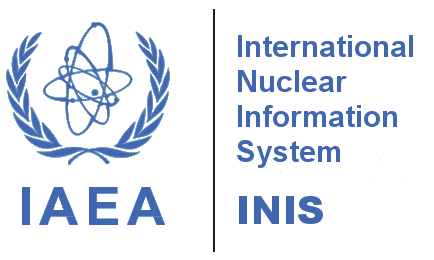RADIONUCLIDIC SEPARATION OF RADIOACTIVE INDIUM FOR MEDICAL AND BIOLOGICAL RESEARCH APPLICATIONS FROM TARGET MATRIX BASED ON NUCLEAR REACTION OF NATCd (n,γ) 115Cd 115mIn
DOI: http://dx.doi.org/10.17146/jair.2009.5.2.531
Sari
nuclear medicine and biological researches, it is not widely explored for domestic use due to domestic limitations on its production technology. Accordingly, the objective of the present works is to master a production processing technology of 115mIn for medical and biological research applications. As the daughter of 115Cd, 115mIn is produced by neutron activation on cadmium target followed by separation in a radioisotope generator based on nuclear reaction of 114Cd (n,γ) 115Cd → 115mIn. In this
study, natural CdO was used as a target while the irradiation was carried out in the G.A. Siwabessy reactor. The separation of radioisotope 115mIn from the irradiated target was carried out by means of solvent extraction and anion exchange column
chromatography. In terms of solvent extraction, the post-irradiated target solution was extracted using two extractants namely 8-hydroxy-quinoline in chloroform and 2-ethylhexyl-phosphate in toluene. The resulting radioindium(III)-organo-complexwas then stripped from the organic phase to release the radioisotope 115mIn. Meanwhile in anion exchange column chromatography, the cadmium fraction in the post-irradiated target solution was conditioned to form anion complex, CdI4
2-, which was then bound on AG 1X8 (Cl¯, 100 — 200 mesh) resin column. The formed 115mIn, the daughter of 115Cd, in the form of 115mIn3+ was then eluted from the column using 0.05 M HCl. It was found that the radioactive indium obtained from the solvent
extraction using 8-hydroxyquinoline in chloroform was chemically contaminated by the extractant, while that obtained from the solvent extraction using 2-ethylhexylphosphate in toluene was significantly contaminated by 115Cd. The anion exchange
column chromatography was found to be the best method for separation of 115mIn from post-irradiated target solution because this method produced pure 115mIn. This was indicated by the resulting 115mIn fraction that gave a mono-energetic γ-ray
spectrum peaking at 336 keV and a half-life of 4.486 hours which were related to 115mIn. The quantitative aspect which was regarded as a radioactivity of the produced 115Cd was found to give a fluctuated result. This result was suspected to be inflicted by irradiation parameters such as inaccuracy in irradiation time, thechanges of reactor power and neutron flux as well as inter-irradiation-position load, which varied from one irradiation to another irradiation.
Teks Lengkap:
PDFRefbacks
- Saat ini tidak ada refbacks.
_____________________________________________________________________________________________________
_____________________________________________________________________________________________________
Ruang Lingkup:
Aplikasi isotop dan radiasi di bidang pertanian, kesehatan, pangan, industri, lingkungan dan aplikasi terkait bidang lainnya
Copyright:
Jurnal Ilmiah Aplikasi Isotop dan Radiasi (A Scientific Journal for the Applications of Isotopes and Radiation)
p-ISSN 1907-0322
e-ISSN 2527-6433
_____________________________________________________________________________________________________
http://jurnal.batan.go.id/index.php/jair_____________________________________________________________________________________________________











